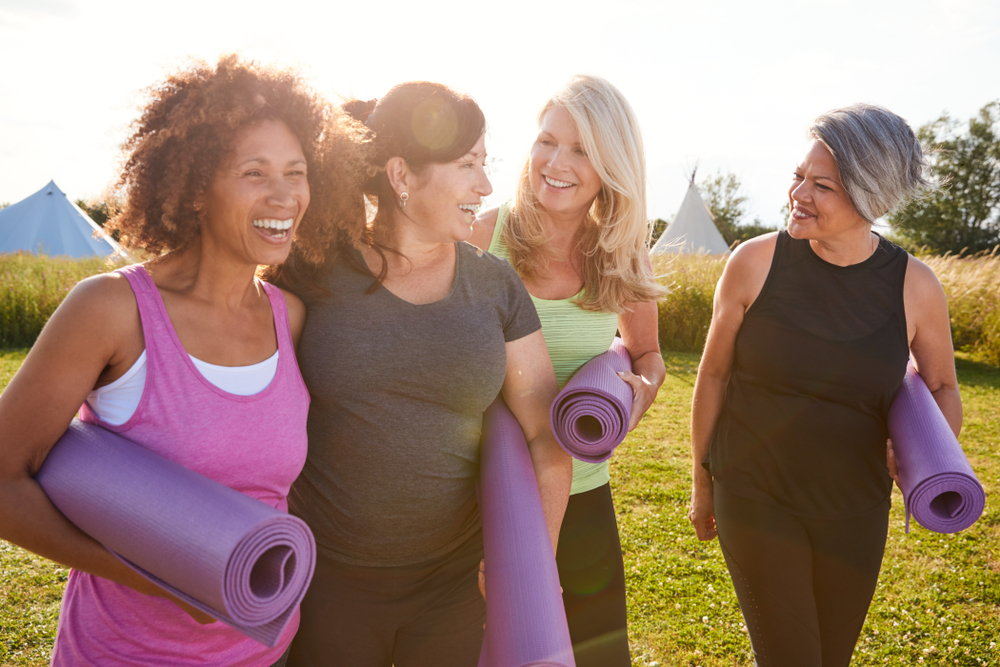
As we age, maintaining our physical and mental well-being becomes increasingly important. While many older adults turn to medication and traditional exercise routines, there’s a powerful and transformative practice that can revolutionize the way you approach aging: yoga and meditation. These ancient disciplines offer a multitude of benefits, from improved flexibility and balance to reduced stress and enhanced cognitive function. In this guide, we’ll explore how incorporating yoga and meditation into your daily life can help you age gracefully and live your best life.
Key Takeaways
- Discover the physical benefits of yoga, including increased strength, flexibility, and balance.
- Learn how meditation can reduce stress, improve mental clarity, and promote emotional well-being.
- Gain practical tips on starting a yoga and meditation practice tailored to your needs as an older adult.
Improved Physical Health and Mobility
One of the most significant benefits of yoga for older adults is its ability to improve physical health and mobility. Regular yoga practice can help increase flexibility, build strength, and enhance balance, all of which are crucial for maintaining independence and reducing the risk of falls. Gentle yoga poses, such as chair yoga or restorative yoga, can be easily adapted to accommodate various physical limitations, making it an accessible practice for seniors of all fitness levels.
Reduced Stress and Improved Mental Well-being
In addition to its physical benefits, yoga and meditation can have a profound impact on mental well-being. The practice of meditation involves focusing the mind on the present moment, which can help reduce stress, anxiety, and negative thought patterns. By incorporating mindfulness techniques into your daily routine, you can cultivate a greater sense of inner peace, resilience, and overall happiness. Yoga, with its emphasis on deep breathing and relaxation, can also help calm the mind and promote a more positive outlook on life.
Enhanced Cognitive Function and Memory
As we age, it’s natural to experience some degree of cognitive decline. However, research has shown that practicing yoga and meditation can help improve cognitive function and memory in older adults. Engaging in regular yoga and meditation can enhance focus, attention, and mental clarity, while also promoting neuroplasticity – the brain’s ability to form new neural connections. By keeping your mind active and engaged through these practices, you can help maintain and even improve your cognitive abilities well into your golden years.
Building a Supportive Community
One of the often-overlooked benefits of yoga and meditation is the sense of community and social support they provide. Attending group classes or workshops can help you connect with like-minded individuals who share your interest in health and well-being. These connections can be particularly valuable for older adults who may be experiencing feelings of loneliness or isolation. By joining a yoga or meditation community, you can forge new friendships, share experiences, and find motivation and encouragement to maintain your practice.
Getting Started with Yoga and Meditation
If you’re new to yoga and meditation, the prospect of starting a practice may feel intimidating. However, with the right guidance and resources, anyone can begin their journey toward improved physical and mental well-being. Start by finding a qualified instructor who has experience working with older adults and can provide modifications and adaptations to suit your needs. Many community centers, senior centers, and yoga studios offer classes specifically designed for seniors. Remember to listen to your body, go at your own pace, and celebrate the small victories along the way.
FAQ Section
Q1: Is yoga safe for older adults with limited mobility? A1: Yes, yoga can be adapted to suit various physical limitations. Chair yoga and gentle yoga styles are excellent options for those with limited mobility.
Q2: How often should I practice yoga and meditation to see benefits? A2: Consistency is key. Aim to practice yoga and meditation at least three times a week, even if it’s just for a short session of 10-15 minutes.
Q3: Do I need any special equipment to start practicing yoga? A3: While a yoga mat is helpful, it’s not essential. You can practice yoga on a carpet or blanket, and use household items like chairs or pillows for support.
Q4: Can yoga and meditation help with chronic pain? A4: Yes, research has shown that yoga and meditation can be effective in managing chronic pain conditions such as arthritis, back pain, and fibromyalgia.
Q5: How can I find a yoga or meditation class near me? A5: Check with local community centers, senior centers, yoga studios, or search online for classes tailored to older adults in your area.
Conclusion
Embracing yoga and meditation as an older adult can be a transformative experience, offering a path to improved physical health, mental well-being, and overall quality of life. By incorporating these practices into your daily routine, you can tap into a powerful source of strength, resilience, and inner peace. Whether you’re looking to increase your flexibility, reduce stress, or simply find a greater sense of purpose and connection, yoga and meditation can help you navigate the joys and challenges of aging with grace and vitality.
Ready to start your journey toward a healthier, happier life? Click the link below to access our comprehensive guide on yoga and meditation for older adults, featuring step-by-step instructions, modifications, and resources to support you every step of the way. Embrace the power of yoga and meditation today, and discover the vibrant, fulfilling life that awaits you!







